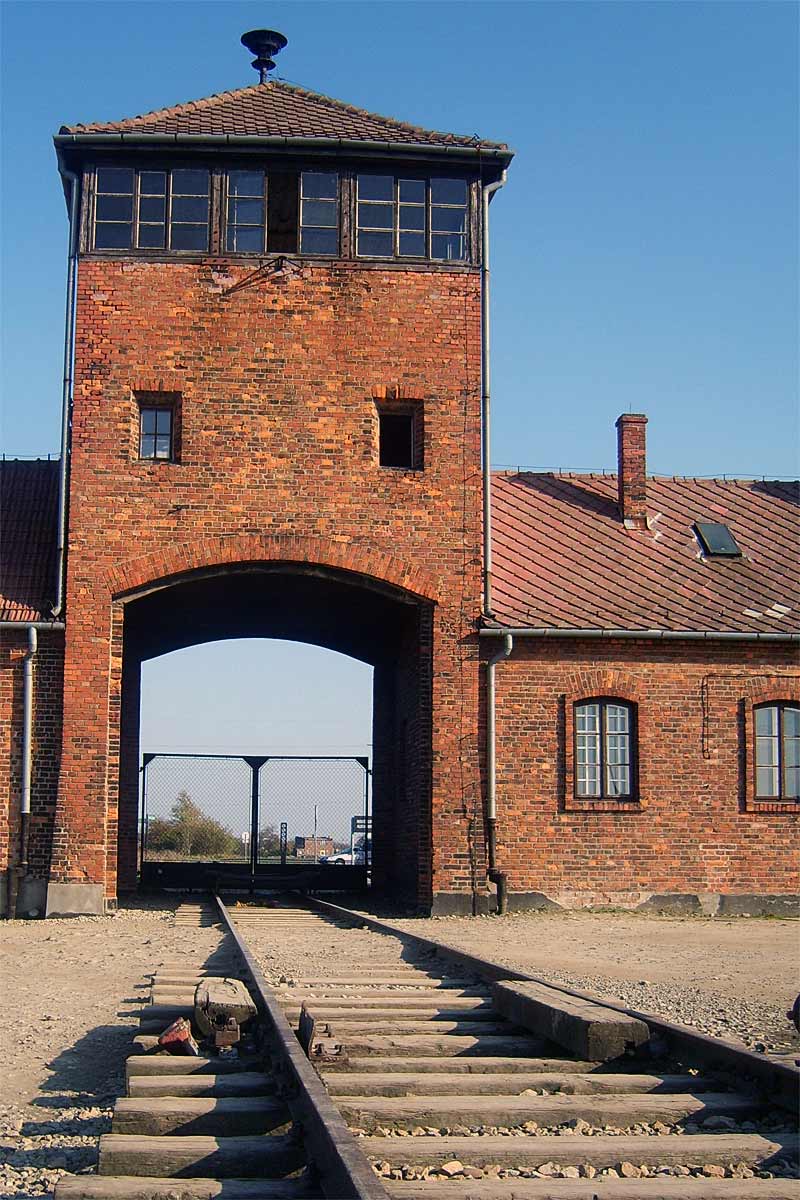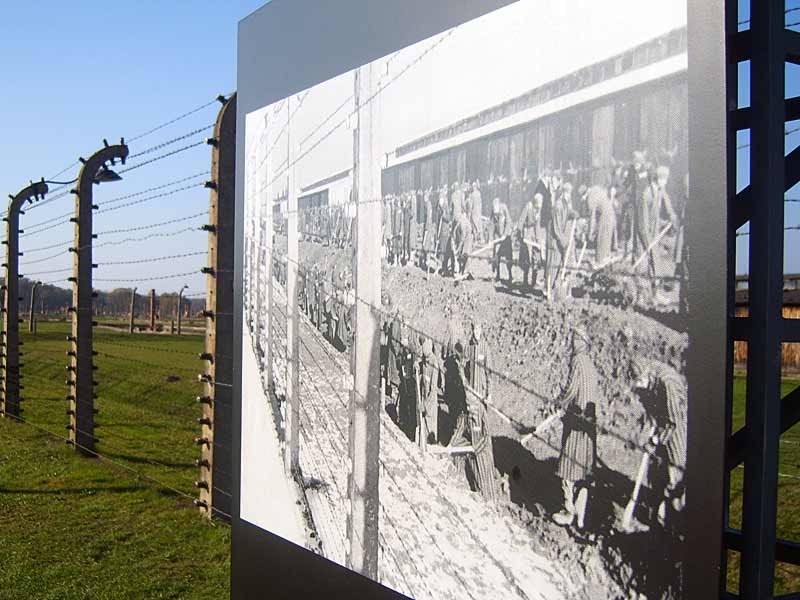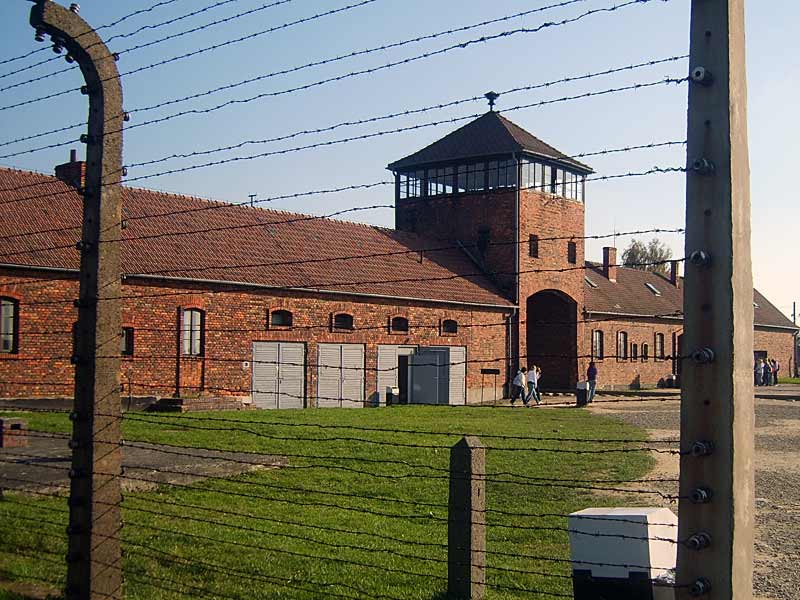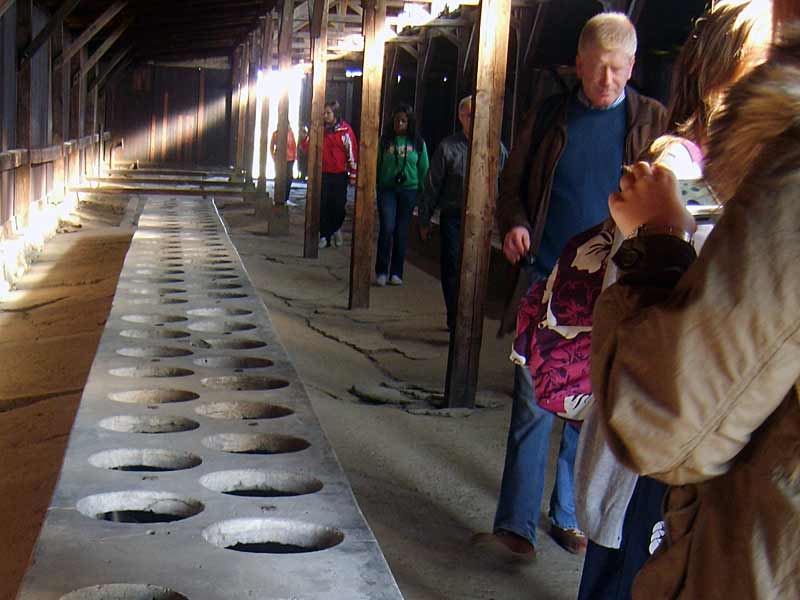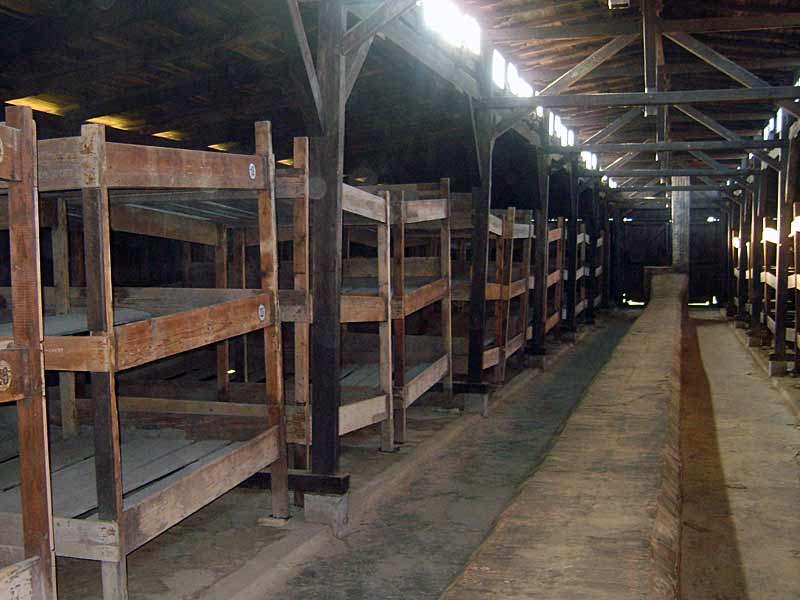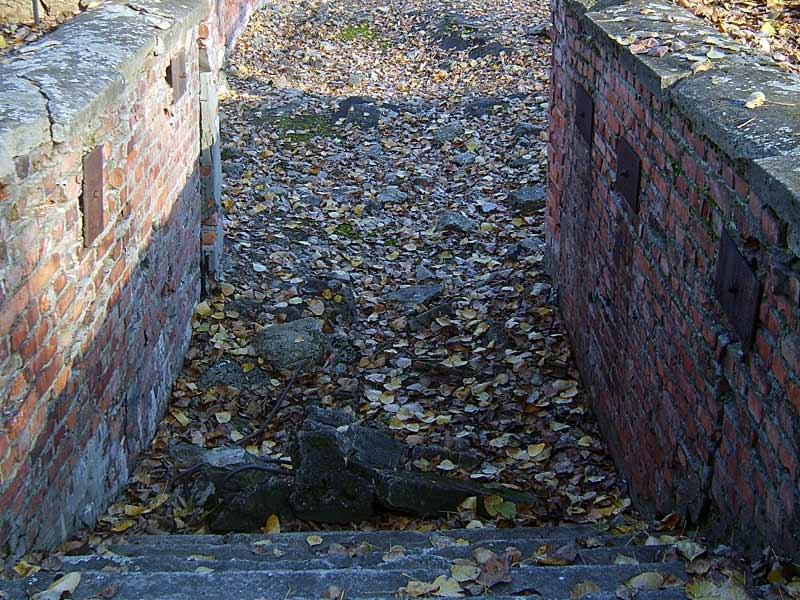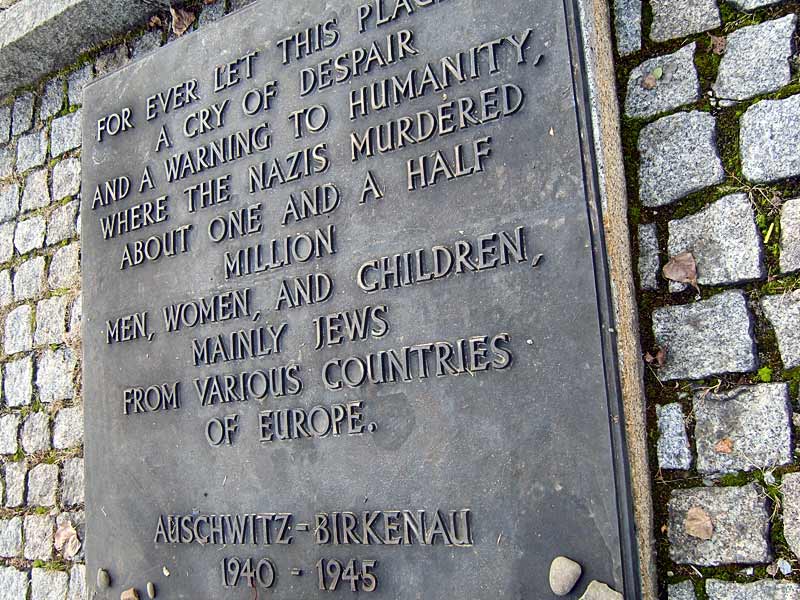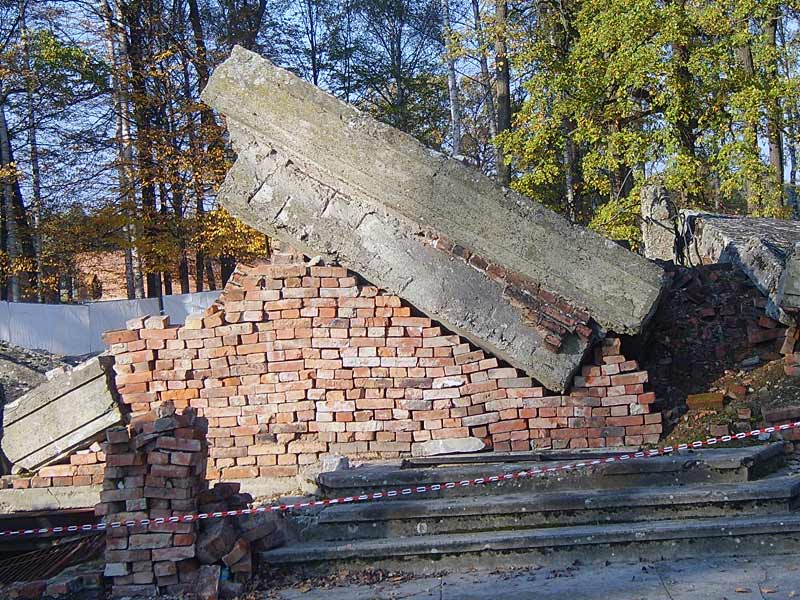

TY visit to Auschwitz - Birkenau Camp (December-2008)
One morning, we were all nervous because we were visiting Auschwitz camp. Everyone said that it was an emotional place. So we were aware of it and knew a bit of what the story is about. So we got on the bus, we were told that it takes half hour to get there but we didn't believe it was that far from Krakow. After a while, we saw train tracks, and we thought they might lead to Auschwitz - Birkenau camp but we don't know for sure. Eventually, we arrived. It was a museum. Ms O' Rourke told us that we are going to watch a short film about Auschwitz. It was heartbreaking to watch. All these Jewish people looked confused and didn't know what to do. There were no subtitles, luckily Mr O Leary interpreted for me and Donna as we were sitting beside him.
When the film ended, we went outside to meet our tour guide, who was Polish but obviously can speak English. Ms O Rourke was our interpreter. It was lovely and sunny. When we were going through the gate we read the sign on top of it in German "Arbeit Macht Frei" our tour guide said it means "Work shall set you free". It was interesting to know what it means. We had a look around and we saw a big picture of a music band. The tour guide said the Nazis made the band play, as it was handy and easier for them to count the Jewish prisoners. There were lots of houses or blocks but only a few were on exhibition. We weren't allowed to take any pictures inside. I was really disappointed because I wanted to show the pictures to my family. But unfortunately, we couldn't. Anyway, we all went inside and it was amazing to see the pictures and it was so interesting. The tour guide was explaining about them. Another block had a model of a gas chamber and dressing room where they took their clothes off. The next block had an exhibition of human hair, glasses, shoes, cans of food and so on. It was heartbreaking to see all these things. It was unbelievable to see. The hair was in plaits and I could see the different brown and blonde hair colours. The Nazis used to send the hair to the factory to make blankets and mattress. We saw a blanket, which it was woven of hair and we felt it. We couldn't believe it. We saw loads of glasses, which were broken and also shoes, even though some are in fashion now. There were some prosthetic legs too. We visited where the prisoners stayed. Each cell had a bed and a toilet with a tiny window. There were plenty of them. We also saw an office with a desk with two beds. Outside the block, a high wall had some flowers and candles in front of it. The wall is used as a memory for all the Jews shot in that yard. We went to Gas Chamber and it was freezing inside. That's where people were killed. Seven hundred were killed by gas in twenty minutes. Another room, it had an oven where they burn the bodies. The oven was rebuilt but it is exactly the same. After our break, we were going to another camp called Birkenau Camp. It huge. On the way, we saw train tracks; it was exactly the same as the picture on Internet. It was unbelievable. We were allowed to take the pictures so we were relieved. There were two stables blocks on two sides, on the left side were for women only and the right side was for men. We went to the men's side. There was one of toilet block, which had no privacy at all. They were only allowed to use the toilet twice a day, morning and evening. The Jewish people liked cleaning the toilets because it was warmer than anywhere else. We saw another stable block, the bunk beds were stuck together, no mattress or anything. Jewish people usually squeezed together to make themselves warm. There was a bench in the middle of the room. It had a tiny stable with beds too and they usually put a horse in there as well. We had a look around and took loads of pictures. We walked down to the end of the train-tracks to the Gas Chamber. A monument was built out of the stones later. It was fascinating place to visit. It was a good experience. We all know the full true story about it now. My visit to Auschwitz- Birkenau Camp Me and my roommates, Anne-Marie and Joanne, woke up at 8am and we headed downstairs for our daily breakfast. We joined the other girls at the breakfast table and we discussed what our day ahead of us would be like. Would we be emotionally haunted about it for the rest of our lives. There was only one way to find out, we had no choice but to go to this camp. When we arrived at the first camp, Auschwitz, we saw a big brick walled building, with many tourists surrounding it. As we entered the building our polish tour guide met us. She led us into a room, which had a white screen, with the projector overlooking it. Many tourists packed the room also. A short clip came on, it was mainly about how the German soldiers treated the Jewish prisoners. It wasn't very pleasant, and most of the people were shocked. Not one word was said, until we left the building. This really affected me, I was very emotional. We then saw wire fences with big buildings behind it. We approached an arch, which read 'Arbeit Macht Frei', meaning, work makes one free. We were disgusted by this, hoping that there wasn't worse more to come. The tour guide then led us into one of the buildings, which contained a special vase which had the remains of the Jewish sufferers, which was a mark of respect. There were many buildings, but we were only allowed into a few. There was a museum, which held some of the Jewish families' belongings such as their hair, shoes, baby clothing, cutlery etc. I couldn't believe what I was seeing; actual human remains. I couldn't describe what I was feeling. We then went to another part of the camp, Birkenau. We saw the train tracks, which brought the Jews all over Europe to the camp. Both sides of the camp had so many buildings, some of them were demolished but the remains were left. These weren't like ordinary buildings they were basically horse stables. The tour guide led us into one of these stables. The conditions were terrible. In fact I don't think I had ever seen anything worse in my life. It had so many bunk beds each with three levels. The toilets were in a separate block and were just concrete holes with a drain underneath. Quite often the prisoners would have to clean out the sewage. We followed the tracks to where the two Gas Chambers were. Of course, they had been knocked down by the Germans as the Russians were coming, but I could see from the amount of bricks how big they were. Who would waste their time building something so big, just to execute these innocent people? I felt completely tense and overwhelmed. Ciara MoloneyTransition year My visit to Auschwitz and Birkneau camp I couldn't believe that Auschwitz camp is still there so long after World War 2. It's there because it needed to show what happened in the past. It was good for us to learn how cruel things happened in the past, to make sure it won't happen again in the future. First we saw a film about the Jews in the camp. It made me feel heartbroken. I think Hitler should not have done that to Jewish people. He was the cruelest person in the whole world. We saw people on film looking so thin with terrible injuries. It was very sad to see it, as it was so real. We met our guide. She was a nice person. We followed her and listened to her tell us about the story of the camp. She showed us lots of buildings. Most of the girls and I took lots of photos but it was pity, photos were not allowed inside the buildings. It was scary to see the exhibition of the Jewish belongings, which were left behind in the camp. One the most terrible things to see was the human hair and the baby clothes. The Nazis used the hair to make blanket and mattress. I was so shocked as I had never heard of that before. We also saw a huge pile of luggage and shoes. It was unbelievable. Next, we went to other buildings to see the prisoner's cells and punishment cells. Terrible things happened in there because if a prisoner tried escape, the soldiers would give all prisoners a punishment or kill them. We went to see an underground cell, it was so small and it was the "standing" cell to punish prisoners by making them stand all night. Outside in the yard, there was a remembrance wall for people shot dead, more than 1,000 people were shot there. We saw the poles used to tie up prisoners for a long time to dislocate their shoulders as a punishment. We walked to the gas chamber nearby. We passed by the hanging place of the Nazi commandant, the leader of the camp. He had escaped and was hiding a long time but people found him and brought him back to the camp for execution. We saw a gas chamber it was a small one. It was so awful and I felt that it was such a bad thing to kill people in there. Inside the walls were black and I saw a hole at the top, which the soldiers used to pour chemicals to suffocate the Jews. It took twenty minutes for the Jews to die. Next, we saw the crematoria; the Jews were burnt in ovens. It was so scary and it made my heart break. Then we went by bus to a different camp called Birkenau. It was so huge; I did not expect it to be so big. There were 200 hundred stable blocks or more. I was not sure how many. They had two separate sides, one for women and another side for men. German soldiers separated them when they arrived on the train. Most of the buildings were knocked down when the Russians freed the prisoners. Russian soldiers decided to knock them down to use the wood to keep the new hospital. There were still up some of them. We walked up to see the ruins of the four big gas chambers, the German soldiers knew the Russians soldiers were coming and knocked them down, as they don't want everyone to know what happen there. German soldiers tried to march prisoners to bring other camps but sadly many people died on the road during the long cold winter. So we looked at the lovely modern artwork built using the stones of the gas chamber to show their memories about how people died. By Paula Glennon, Transition year
